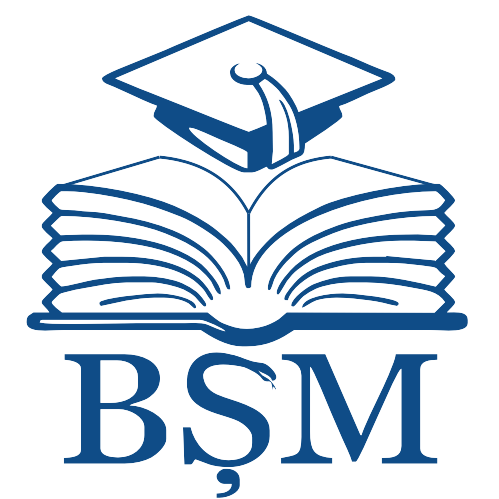|
|
- IRMS - Nicolae Testemitanu SUMPh
- 1. COLECȚIA INSTITUȚIONALĂ
- MATERIALE ALE CONFERINȚELOR ȘTIINȚIFICE
- „Cells and tissues transplantation. Actualities and perspectives. The 3rd edition” dedicated to the 80th anniversary of the founding of Nicolae Testemitanu State University of Medicine and Pharmacy. Chisinau, March 21-22, 2025
- The Materials of the National Scientific Conference with International Participation „Cells and tissues transplantation. Actualities and perspectives. The 3rd edition” dedicated to the 80th anniversary of the founding of Nicolae Testemitanu State University of Medicine and Pharmacy. Chisinau, March 21-22, 2025: [Abstracts]
Please use this identifier to cite or link to this item:
http://hdl.handle.net/20.500.12710/30444
| Title: | Cancer stem cells and tumor microenvironment: implications for therapy resistance and novel strategies |
| Authors: | Colibaba, Vasile
Sardari, Veronica |
| Keywords: | cancer stem cells;tumor microenvironment;tumorigenesis;metastasis;therapeutic resistance;anticancer therapy;CSC-targeted therapies |
| Issue Date: | 2025 |
| Publisher: | CEP Medicina |
| Citation: | COLIBABA, Vasile and Veronica SARDARI. Cancer stem cells and tumor microenvironment: implications for therapy resistance and novel strategies. In: Cells and tissues transplantation. Actualities and perspectives. The 3rd edition : The Materials of the National Scientific Conference with international participation dedicated to the 80th anniversary of the founding of Nicolae Testemitanu State University of Medicine and Pharmacy. Chisinau, March 21-22, 2025: [abstracts]. Chişinău: CEP Medicina, 2025, p. 31. ISBN 978-9975-82-413-2. |
| Abstract: | Background. Cancer stem cells (CSCs) represent a distinct subpopulation of tumors, characterized by
self-renewal capacity and multilineage differentiation potential. These cells interact dynamically with
the tumor microenvironment (TME).
Objective of the study. To elucidate the interactions between CSCs and the TME, highlighting their
roles in tumor progression, metastasis and treatment resistance, as well as the need for targeted
therapies.
Materials and Methods. An extensive review of the existing literature was conducted by gathering
and analyzing scientific articles sourced from multiple databases, including PubMed, HINARI, Google
Scholar and Medline.
Results: CSCs are key drivers in multiple aspects of tumor development, including the initiation of
tumor formation, its subsequent progression, metastasis and therapeutic resistance. Their intrinsic
resistance to conventional anticancer treatments significantly contributes to tumor relapse and
treatment failure. Several signaling pathways, including WNT/β-catenin, Hedgehog, Notch, nuclear
factor kappa B (NF-κB), JAK/STAT, transforming growth factor beta (TGF-β), phosphatidylinositol
3-kinase/protein kinase B (PI3K/AKT), and peroxisome proliferator-activated receptor (PPAR),
regulate CSCs function, influencing tumorigenesis, metastasis, and tumor heterogeneity. CSCs are
primarily located within specialized tumor niches, where hypoxia, aberrant angiogenesis, and chronic
inflammation promote their survival and expansion. Stromal cells, such as cancer-associated
fibroblasts (CAFs), mesenchymal stem cells (MSCs), endothelial cells, and adipocytes, contribute to
TME maintenance by stimulating angiogenesis, facilitating extracellular matrix (ECM) remodeling,
inducing therapeutic resistance, and enhancing metastatic dissemination. Within the tumor
microenvironment (TME), various immunosuppressive cell populations, including tumor-associated
macrophages (TAMs), myeloid-derived suppressor cells (MDSCs), cancer-associated fibroblasts
(CAFs), and regulatory T cells (Tregs), play a pivotal role in modulating immune responses. These
cellular components collectively suppress antitumor immune reactivity and create a permissive
environment that facilitates tumor progression and immune evasion.
Conclusions: A bidirectional relationship is established between CSCs and the TME, where the TME
sustains CSCs survival, while CSCs modulate the structure of the TME, promoting an
immunosuppressive environment. These interactions compromise the efficacy of current cancer
therapies, emphasizing the need for novel therapeutic strategies targeting both CSCs and the TME,
ultimately improving treatment outcomes. |
| metadata.dc.relation.ispartof: | Cells and tissues transplantation. Actualities and perspectives. The 3-rd edition. Chisinau, March 21-22, 2025 |
| URI: | https://repository.usmf.md/handle/20.500.12710/30444 |
| ISBN: | 978-9975-82-413-2 |
| Appears in Collections: | The Materials of the National Scientific Conference with International Participation „Cells and tissues transplantation. Actualities and perspectives. The 3rd edition” dedicated to the 80th anniversary of the founding of Nicolae Testemitanu State University of Medicine and Pharmacy. Chisinau, March 21-22, 2025: [Abstracts]
|
Items in DSpace are protected by copyright, with all rights reserved, unless otherwise indicated.
|


